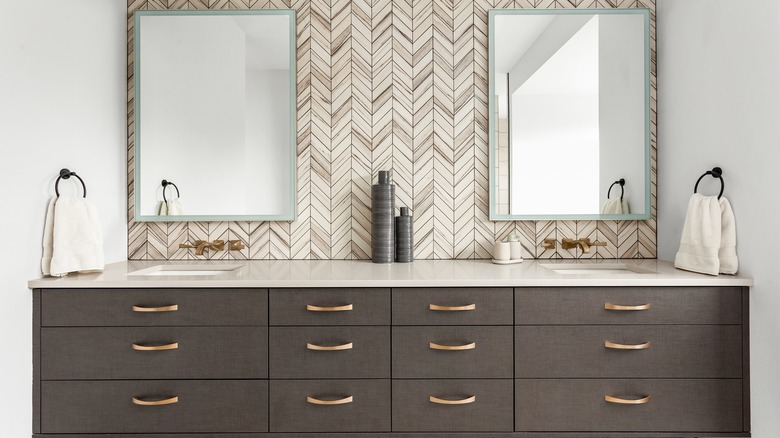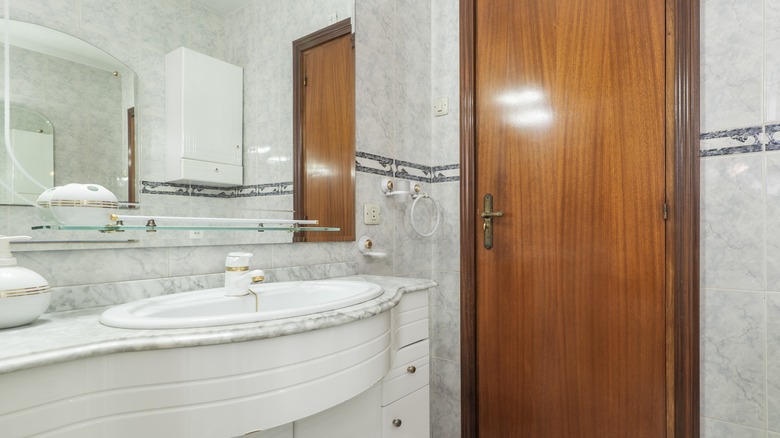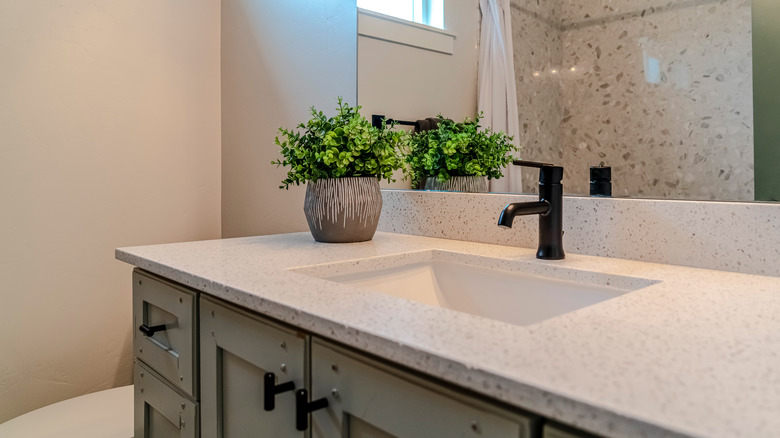Drop-In Vs Undermount Sink: Which Is Right For Your Bathroom?
Drop-in sinks, also known as self-rimming or top-mount sinks, are inserted into a pre-cut hole in the countertop, and their rims sit on top of the countertop, creating a visible edge around the sink. Undermount sinks are mounted underneath the countertop, fixed to the underside, and don't have that visible edge. When deciding which sink type is right for your bathroom, consider your bathroom style and your personal tastes by thinking of the countertop material you're considering and the installation process you want.
Undermount sinks require solid and sturdy countertop materials, while drop-in sinks can be installed on any type of material. Drop-in sinks are relatively simple to install by yourself. However, you will need professional installation to mount an undermount sink because it requires precise cutting and securing of the sink. Also, think about your design preference. If you want a visible lip, an undermount sink is right for you, but if you want a seamless appearance, get a drop-in sink.
Drop-in
Drop-in sinks are great for their versatility since they can be fitted on any countertop material of your choice and are easier to replace without disturbing the countertop. Even if you're not a pro, you can DIY the installation with the right tools and a set of clear instructions. Just make sure to caulk the edge well and replace it when it wears off.
Drop-in sinks range from 16 to 24 inches in size and 4 to 7 inches in depth. You can find them in the classic oval and square or rectangular shapes. One issue with a drop-in sink is that it can be seen as outdated, which isn't good if you want a modern-style house for the aesthetic or to sell later. The rim can also be hard to clean since things can be lodged there. In terms of budget, they are generally more affordable than undermount sinks and can cost anywhere from $60 to $500.
Undermount sink
Undermount sinks are typically more aesthetically pleasing than drop-in sinks for their sleek look. With no lip or edge, they allow you more usable counter space and are easier to clean since there are no crevices for dirt and grime to sit. As mentioned, they need to be on a solid countertop material, and some options are granite and quartz; avoid tile or laminate. To mount an undermount sink, you have to get professional installation because it requires precise cutting and securing. Undermount sinks range from 16 by 16 inches to 20.75 by 14 inches and 4 to 7 inches deep.
They are more expensive than drop-in sinks because they're made from quality material to be extra durable. They can cost anywhere from $170 to $2,000, and the labor for a professional installation adds to the final cost. While they are more expensive, you can be sure they are high-quality. They can also boost the resale value of your home because more home buyers prefer them to drop-in sinks.


